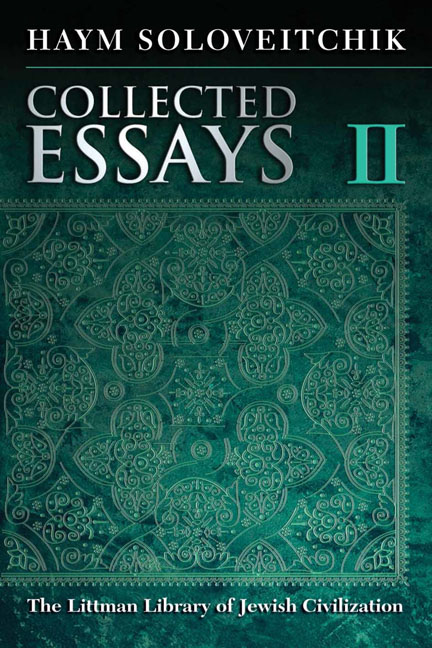Book contents
- Frontmatter
- Dedication
- Preface
- Acknowledgments
- Contents
- Note on Transliteration and Conventions Used in the Text
- PART I RE-EVALUATION OF ELEVENTH-CENTURY ASHKENAZ
- PART II MARTYRDOM UNDER CROSS AND CRESCENT INTRODUCTION
- PART III MISHNEH TORAH
- Bibliography of Manuscripts
- Source Acknowledgments
- Index of Names
- Index of Places
- Index of Subjects
Introduction
- Frontmatter
- Dedication
- Preface
- Acknowledgments
- Contents
- Note on Transliteration and Conventions Used in the Text
- PART I RE-EVALUATION OF ELEVENTH-CENTURY ASHKENAZ
- PART II MARTYRDOM UNDER CROSS AND CRESCENT INTRODUCTION
- PART III MISHNEH TORAH
- Bibliography of Manuscripts
- Source Acknowledgments
- Index of Names
- Index of Places
- Index of Subjects
Summary
FOR SOME FIFTEEN YEARS, from about 1985 to 2000, I was occupied with putting out the halakhic writings of my father and grandfather. During this period a great deal of scholarly writing appeared about eleventhcentury Ashkenaz with which I found myself in disagreement, both substantively and methodologically. I did not wish to publish criticisms until I had placed on the shelves examples of how I believed the history of halakhah should be written. (My Hebrew book on pawnbroking was, as I wrote in the first volume of this series,1 far too compressed to have any impact, or even to have many readers.) The blocks of time available to me during that decade and a half sufficed for part-time research but not for writing. Other than an essay on Modern Orthodoxy, I published next to nothing. (Shut ke-Makor Histori, which appeared in 1990, had been written ten years earlier.) Having now placed in the public domain two books on the history of halakhah, both of which engage heavily with the problematic literature of the eleventh century, I am ready to print my critique of many of the regnant theories of halakhah in Early Ashkenaz.
I find myself at variance with Reuven Bonfil's readings of both Agobard of Lyons and the Megillat Aḥima’ats (Chronicle of Aḥima’ats); I fail to see the basis of I. M. Ta-Shma's claim of a minhag Ashkenaz ha-Kadmon and have difficulty with a number of Avraham Grossman's determinations. The latter scholar, having written the most substantive and detailed studies of the period, bears the brunt of my critique; a few words, therefore, are in place.
Only someone who wrote, as I did, both his MA (1968, on setam yeinam) and Ph.D. (1973, on usury and pawnbroking) before the appearance of Grossman’s books can appreciate the magnitude of his accomplishments. Any study of setam yeinam and usury must draw heavily on the literature of Early Ashkenaz; indeed, the halakhic positions of eleventh-century German scholars occupy more than a third of any of the half-dozen or so essays that I have written on these subjects. Ineluctably, I was obliged to work out rudimentary biographies of every figure of the period simply to know who was who and who was what to whom. I found it a time-consuming and thankless task and, after it was done, I was always worried that I may well have overlooked some significant fact.
- Type
- Chapter
- Information
- Collected EssaysVolume II, pp. 3 - 4Publisher: Liverpool University PressPrint publication year: 2014



